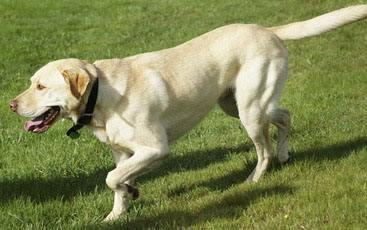Chapter 9 Posture and movement in quadrupeds
Key points
 In veterinary species, the extrapyramidal motor system is most important for gait and movement. Output from the motor cortex, through the pyramidal system, influences voluntary, skilled movement but has minimal influence on gait.
In veterinary species, the extrapyramidal motor system is most important for gait and movement. Output from the motor cortex, through the pyramidal system, influences voluntary, skilled movement but has minimal influence on gait.
 Alternation between extension and flexion is largely generated by spinal cord reflexes; such patterns are triggered and sustained by central pattern generators.
Alternation between extension and flexion is largely generated by spinal cord reflexes; such patterns are triggered and sustained by central pattern generators.
 UMN tracts primarily responsible for the support phase are the vestibulospinal and pontine reticulospinal tracts facilitating extensor muscles. The flexor phase is controlled by the medullary reticulospinal and the rubrospinal tracts.
UMN tracts primarily responsible for the support phase are the vestibulospinal and pontine reticulospinal tracts facilitating extensor muscles. The flexor phase is controlled by the medullary reticulospinal and the rubrospinal tracts.
 Some UMN nuclei in the brainstem work as locomotive trigger centres and stimulate or inhibit ambulation.
Some UMN nuclei in the brainstem work as locomotive trigger centres and stimulate or inhibit ambulation.
 Forebrain lesions in non-primates can cause postural reaction deficits and mild motor signs.
Forebrain lesions in non-primates can cause postural reaction deficits and mild motor signs.
 Brainstem lesions can cause opisthotonus due to loss of cerebral inhibition of the UMN nuclei that facilitate extensor muscle activity. Or lesions may cause paresis due to loss of UMNs facilitating locomotory activity.
Brainstem lesions can cause opisthotonus due to loss of cerebral inhibition of the UMN nuclei that facilitate extensor muscle activity. Or lesions may cause paresis due to loss of UMNs facilitating locomotory activity.
 Cerebellar lesions can cause ataxia without paresis.
Cerebellar lesions can cause ataxia without paresis.
 UMN and LMN lesions result in disparate types of paresis distinguishable by the Neuro ‘RAT’ – (reflexes, atrophy and tone). The signs are also determined by lesion location and severity, and the number of tracts that have been compromised.
UMN and LMN lesions result in disparate types of paresis distinguishable by the Neuro ‘RAT’ – (reflexes, atrophy and tone). The signs are also determined by lesion location and severity, and the number of tracts that have been compromised.
Motor function in quadrupeds compared to primates
Integration of neural functions for locomotion and movement
Basic stepping movements and control systems
Stepping, and the oscillation between extension and flexion of limbs and body, weight bearing and non-weight bearing, is based primarily on reflex circuitry within the spinal cord; it also involves central pattern generators. The flexion of one limb can induce reflex extension in the other limbs, both of the same limb girdle and the other limb girdle (see Fig. 9.1); this utilises the crossed extension reflex. Note that in the normal animal, when recumbent, the crossed extensor reflex is inhibited. In recumbent animals with UMN lesions, active flexion of one limb (e.g. withdrawal reflex) can result in the contralateral limb extending. This indicates loss of descending UMN pathways that inhibit crossed extension reflexes.
Input, integration and output of the reflexes: Sensory input for the reflexes comes from muscle spindles, Golgi tendon organs, joint and tactile receptors. Integration of that input in the spinal cord causes inhibition or excitation of LMNs, as appropriate, in that same limb, in the opposite limb or the limbs of the other girdle. The activity of the epaxial and hypaxial muscles of the trunk, neck and tail are also interlinked. For example, look at how a cat uses its tail to maintain its balance by offsetting muscle activity in the trunk when it is ‘tight-rope walking’ along the top of a narrow fence. Integration of neural activity between the muscles of the limbs and body is done primarily using spinospinal tracts such as the propriospinal tract. This tract connects between spinal cord segments and is located in all funiculi immediately surrounding the grey matter (see Fig. 4.5). Constant proprioceptive input from all body and limb muscles both activates the reflexes and sends sensory information to the cerebellum for use in coordination of motor activity. Proprioceptive input to the forebrain gives rise to conscious awareness of posture and movement; this is called kinaesthesia (see Chapter 6).
The UMN tracts primarily responsible for the protraction and support phase are the vestibulospinal and pontine reticulospinal tracts facilitating extensor muscles. For the retraction/flexor phase, extensor muscle activity must be inhibited and flexor muscle LMNs must be stimulated utilising the medullary reticulospinal and the rubrospinal tracts (Table 4.3). At the end of retraction, extension and subsequently, the support phase, occurs again.
Coordination of locomotion
The overall function of the cerebellum is to coordinate agonistic/antagonistic muscle activity to permit posture and to create movement that occurs at the correct rate, range and force (see Chapter 7).
1. Posture. The cerebellum has an important role in coordinating overall posture.
The postural platform. The cerebellum has a critical role in establishing the postural platform (see Chapter 7). Failure to do so prevents normal, coordinated movement.
Stay updated, free articles. Join our Telegram channel

Full access? Get Clinical Tree



